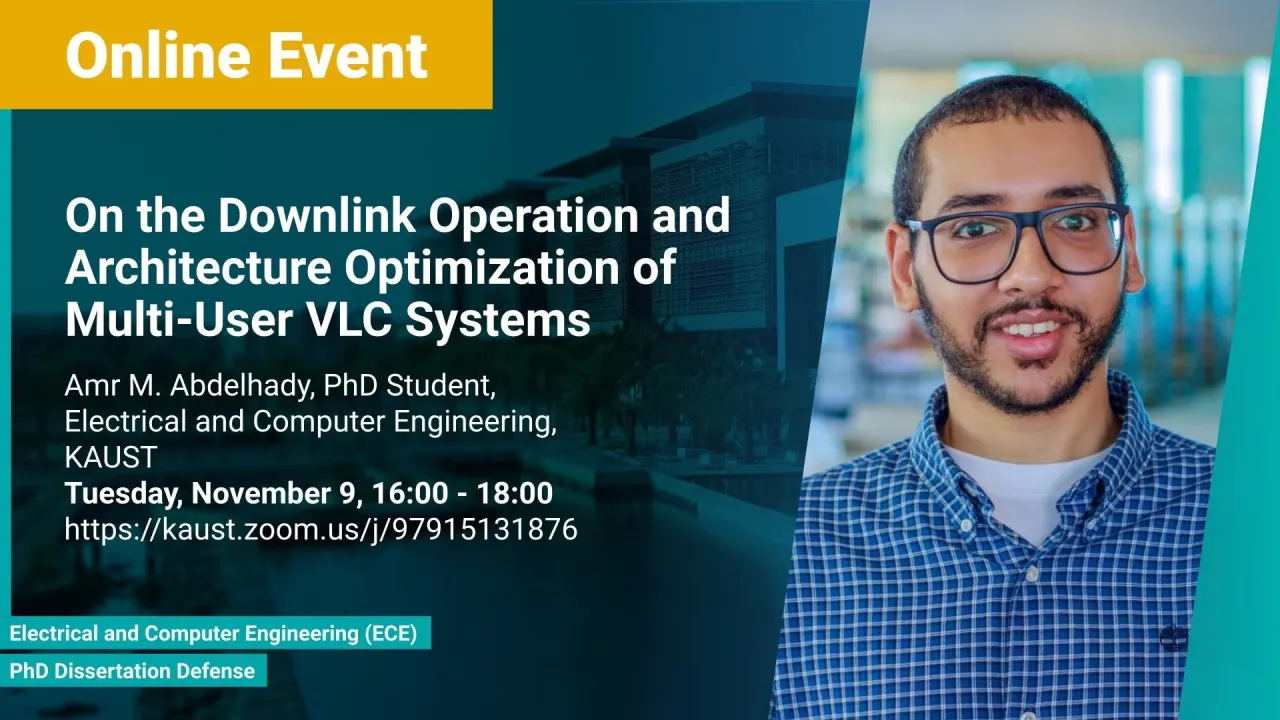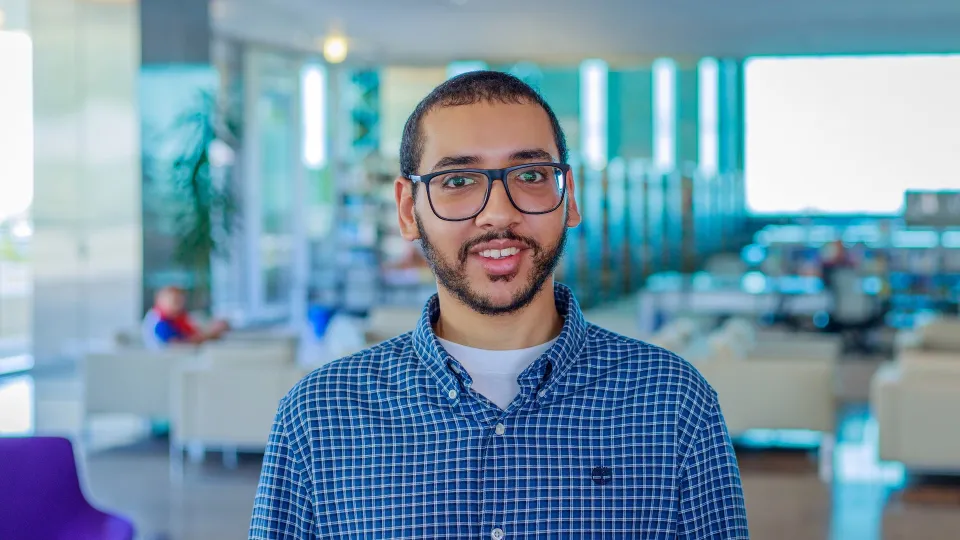
On the Downlink Operation and Architecture Optimization of Multi-User VLC Systems
The limited overcrowded radio frequency spectrum compelled researchers to explore higher frequency ranges for wireless transmission such as optical frequency bands. In recent decades, visible light communications (VLC) have gained lots of research attention thanks to the abundant bandwidth they offer and the existing lighting infrastructure they utilize that consequently reduces deployment costs.
Overview
Abstract
The limited overcrowded radio frequency spectrum compelled researchers to explore higher frequency ranges for wireless transmission such as optical frequency bands. In recent decades, visible light communications (VLC) have gained lots of research attention thanks to the abundant bandwidth they offer and the existing lighting infrastructure they utilize that consequently reduces deployment costs. Throughout this dissertation, we study the downlink of multi-user VLC systems with the aim of operation and architecture enhancement. In this context, we accommodate the challenges imposed by the visible light nature such as illumination requirements and modulation constraints. On the operation optimization front, we investigate three VLC setups: indoor single cell, outdoor energy harvesting enabled single cell, and indoor energy harvesting enabled multi-cell VLC systems. We formulate and provide low-complexity solutions to, resource allocation problems for each setup while accounting for scenario-tailored system objectives and quality of service requirements. For the first setup, the temporal average illumination is maintained fixed while maximizing the system SE and dynamic time-division-multiple-access is employed to serve users in an interference-free setup. The non-convexity imposed by constant average lighting constraint is addressed by finding a suitable difference of convex programming representation that is further handled by successive convex approximation. As for the second setup, owing to the favored joint lighting and SE maximization, we solve a multi-objective optimization problem accounting for both objectives. We find that the severity of the illumination - communications tradeoff increases as the available system power budget decreases or the minimum rate requirements get tighter. In the third setup, transmitters average currents and receivers fields of view tuning strategies are developed to maximize both spectral efficiency and energy harvesting objectives in an interference limited scenario, where spatial illumination uniformity is required. It is found that receivers fields of view tuning is substantial to performance enhancement in dense deployments. In addition, a significant tradeoff is observed between the total harvested energy and the system overall spectral efficiency. On the architecture optimization front, we propose two intelligent reflecting surfaces-aided VLC systems and derive their power density contribution in the receiver plane for a general relative transmitter-reflector-detector locations and dimensions setting. In addition, we prove their power concentration capability and quantify their relative gain with respect to one another and with respect to the reflector-free VLC systems enjoying direct line of sight. Finally, we study the channel impulse response of the proposed reflecting systems and quantify the incurred delay spread through exact expression and simplified upper bounds and asymptotic expressions when the number of constituting reflecting elements grows without bounds.
Brief Biography
Amr Abdelhady is a Ph.D. candidate in the Electrical and Computer Engineering Program at King Abdullah University of Science and Technology. He received the B.Sc. degree (Hons.) in communications and computer engineering from Cairo University, Giza, Egypt, in 2012, and the M.Sc. degree in electrical engineering from King Abdullah University of Science and Technology, Thuwal, Saudi Arabia, in 2016, where he is currently pursuing the Ph.D. degree. His general research interests lie in communications theory, signal processing for communications with special emphasis on optical wireless communications systems. Specific research areas include visible light communications, green communications, energy harvesting, and intelligent reflecting surfaces.
